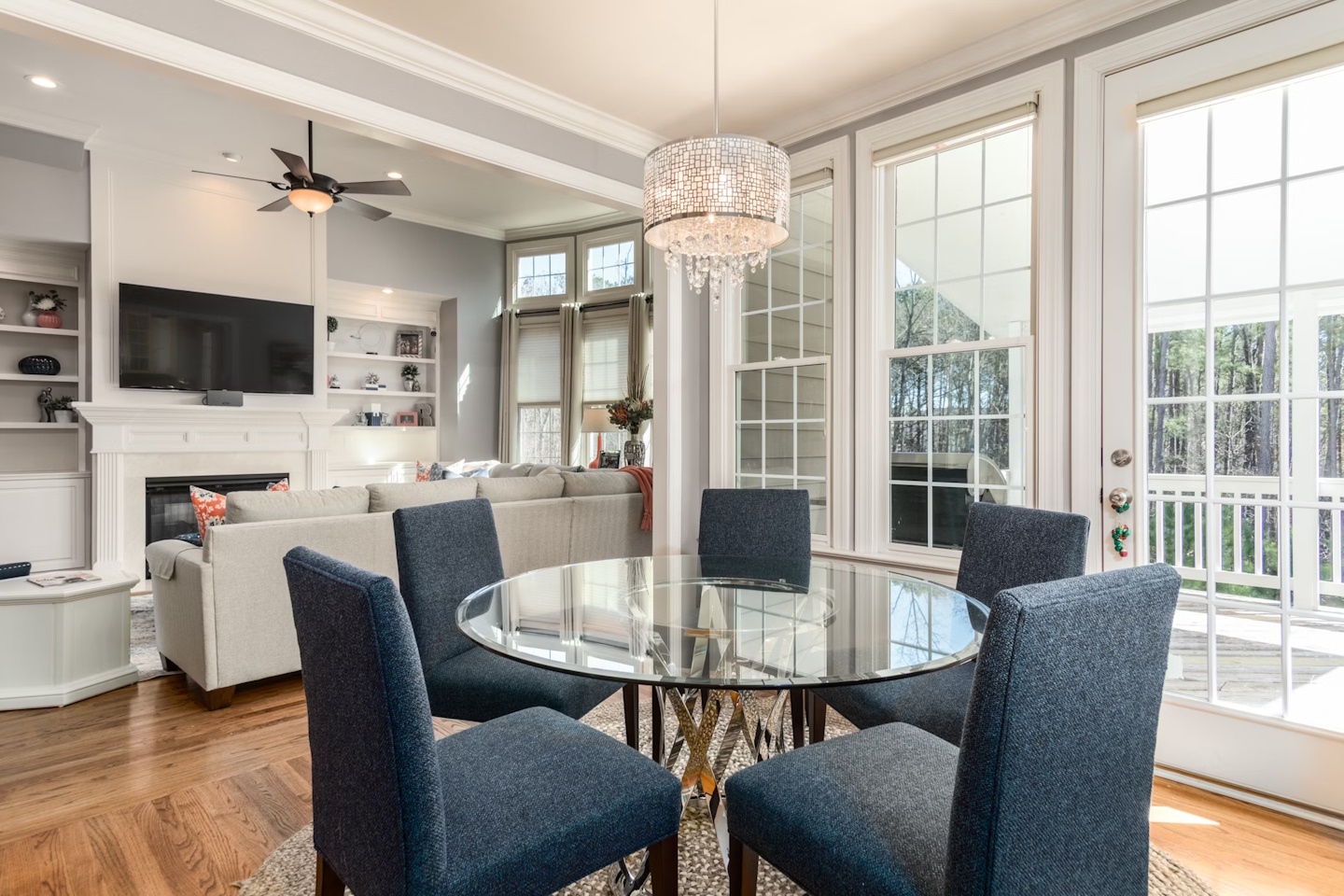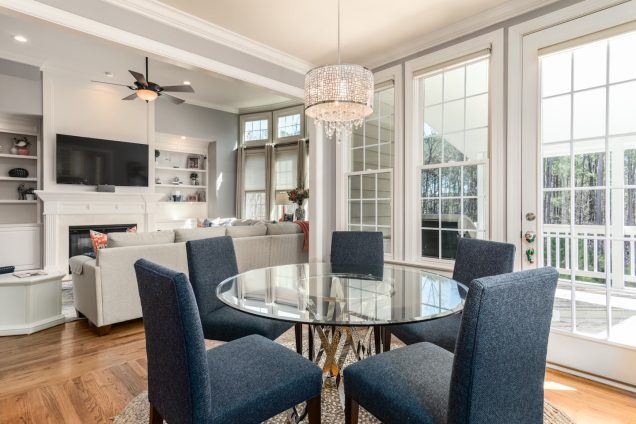Evolution of Window Design Over the Decades
Windowor indoStepping into the architectural journey of window design unveils a rich tapestry of innovation and style. It reflects centuries of cultural shifts and technological advancements. As we delve into “The Evolution of Window Design Over the Decades,” we uncover how windows’ aesthetic and functional essence have transformed. It is shaping how we live and interact with our surroundings. Today, this evolution is palpable in the diverse array of window styles that adorn homes across the UK. You will see everything from the timeless elegance of traditional and heritage windows to the sleek modernity of flush sash and aluminium windows. Also, the robust sophistication of composite and aluminium front doors, including the cutting-edge Smarts Signature doors.
Each style is a testament to window design’s enduring legacy and future. It invites us to explore the intricate balance between past inspirations and contemporary innovation. As we journey through the decades, let us appreciate the refined diversity and technical prowess that define today’s window designs, a selection of which is proudly showcased at Leicester Window Supplies, where tradition meets modernity to redefine the essence of home.
The Foundations: Pre-20th Century
The architectural landscape of the UK, steeped in history and tradition, bears witness to the evolution of window design from its nascent stages. The earliest windows were simple yet vital openings designed to let in light and air while providing a rudimentary barrier against the elements. Constructed from materials readily available, such as wood, stone, and, in later periods, leaded glass, these windows were integral to the functionality of buildings. The styles varied greatly, from medieval times’ unglazed openings to Tudor buildings’ mullioned windows. Each one reflecting their eras’ technological and artistic capabilities. As architectural knowledge and materials advanced, so did the complexity and variety of window designs. It has laid the groundwork for the rich diversity seen in subsequent centuries.
The transition from these basic openings to more elaborate and functional windows marks a significant evolution in architectural design. Initially serving primarily utilitarian purposes, windows began to embody form and function, reflecting broader changes in architecture and society. The introduction of glass panes in the 17th century revolutionised window design. It transformed from mere openings to sophisticated elements of architectural beauty and status symbols for the affluent. This period saw the development of sash windows, which added an aesthetic appeal to buildings and improved ventilation and light control. The subsequent Victorian and Edwardian eras embraced these advancements, incorporating stained glass and intricate designs that celebrated artistry as much as utility.
The 20th Century: Window Design Innovation
The 20th century heralded a period of remarkable innovation in window design, evolving through distinct phases that mirrored broader architectural and societal shifts. In the early 20th century, the Arts and Crafts movement left its indelible mark on window styles, advocating for the beauty of hand-crafted designs and the continued use of traditional materials. This era saw a renaissance of intricate leaded glass and wooden frames, emphasising artistry and craftsmanship in architecture.
As the century progressed, the aftermath of the World Wars catalysed a movement towards modernism, influencing window designs. The mid-20th century welcomed the advent of aluminium windows, prized for their durability, strength, and sleek appearance, marking a departure from traditional materials. This era also ushered in the initial considerations for energy efficiency, as architects and homeowners alike began to value thermal performance in building design.
By the late 20th century, the landscape of window design had diversified significantly. The introduction of double glazing became a game-changer, setting new standards for energy conservation and comfort in homes. Furthermore, the development of uPVC windows revolutionised the market with their promise of improved energy efficiency and significantly lower maintenance than their wooden counterparts. This period of innovation laid the foundation for today’s sophisticated, energy-conscious window designs. It showcases the century’s journey from continuing traditional styles to embracing technology and sustainability.
The 21st Century: Diversity and Technology
The dawn of the 21st century has seen window design evolve dramatically, propelled by technological advancements and a growing consciousness around environmental sustainability. These developments have given rise to windows that exceed in energy efficiency, durability, and aesthetic diversity. The era is marked by a commitment to marrying form with function, therefore ensuring that today’s windows cater to the demands of modern living while addressing the imperative of energy conservation.
Window Design Styles
Today’s landscape of window and door design is a testament to how far the industry has come, offering a plethora of options that pay homage to historical styles whilst embracing the benefits of contemporary technology:
- Traditional Windows: These windows maintain classic aesthetics with cutting-edge modern performance (A+ energy rating), appealing to those who want to preserve their homes’ timeless beauty without sacrificing energy efficiency.
- Heritage Windows: Perfect for period properties, these windows blend historical charm with today’s technology, ensuring compliance with conservation area requirements while offering modern benefits.
- Flush Sash Windows: Offering a sleek, flat finish, these windows mimic traditional timber joinery, combining the aesthetic appeal of yesteryears with the performance standards of today.
- Aluminium Windows: Known for their strength, durability, and slim profiles, aluminium windows meet contemporary demands for minimalist design and high functionality.
- Composite Doors: Blending materials for enhanced security, insulation, and design flexibility, these doors represent the pinnacle of modern engineering in door technology.
- Aluminium Front Doors: Combining modern aesthetics with high security and low maintenance, these doors offer an attractive, durable entry point to contemporary homes.
- Smarts Signature Doors: These top-quality doors highlight customisation and innovation in door design. They allow for a personalised touch, ensuring that every entrance makes a statement.
This era underscores a remarkable blend of tradition and innovation. It demonstrates that the future of window and door design is not just about looking forward but also about preserving the past.
Leicester Window Supplies
We journeyed through the fascinating evolution of window and door designs, from traditional styles’ rich heritage to modern technology’s sleek innovation. Therefore, the perfect solution for your home is waiting to be discovered. Whether you’re drawn to the timeless elegance of Heritage Windows, or the cutting-edge performance of Aluminium Front Doors. Want the bespoke beauty of Smarts Signature Doors? the options are as diverse as the stories behind them.
Take the first step towards transforming your home with windows and doors that blend historical charm with contemporary efficiency. Reach out to the experts at Leicester Window Supplies, where tradition meets innovation, and discover how we can bring your vision to life. Call us today at 0116 2665080 to discuss your needs and let us help you make an informed choice. We can find a window design that resonates with your home’s character and style.
Your journey towards a more beautiful, energy-efficient home starts here.
Posted: April 3, 2024





